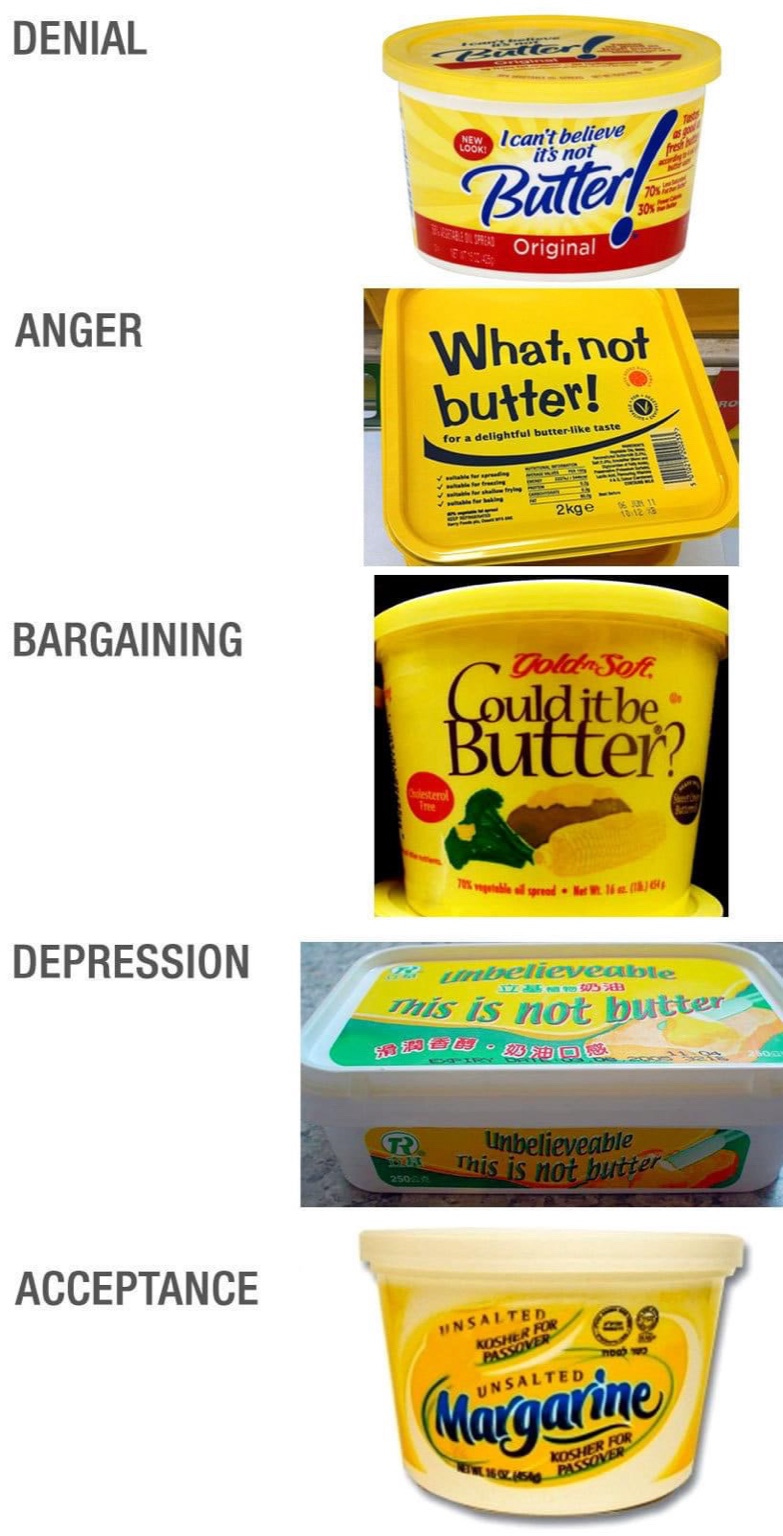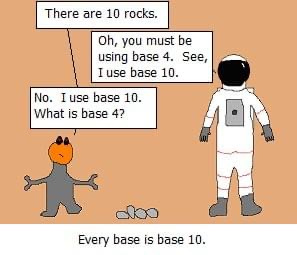How is it funny?
Memes and cartoons
This comic strip is a humorous take on the famous scene from the movie "Titanic" where Jack (Leonardo DiCaprio) and Rose (Kate Winslet) are floating in the ocean after the ship has sunk. In the original scene, Jack sacrifices himself by staying in the water while Rose lies on a piece of debris, leading to his eventual death from hypothermia.
In this comic:
First Panel: The character resembling Jack says, "Make room Rose," indicating his desire to share the space on the floating debris.
Second Panel: The character resembling Rose responds, "Leo, I'm 27," humorously implying that she's aware of Leonardo DiCaprio's reported preference for dating women under 25, poking fun at his real-life dating habits.
Third Panel: Jack appears to start slipping into the water, indicating that Rose's refusal or comment is causing him to give up.
Fourth Panel: Jack is completely submerged, while Rose remains on the debris, similar to the tragic outcome in the movie.
The humor arises from the clever integration of a real-life reference to Leonardo DiCaprio's dating preferences into the context of a well-known movie scene, creating an unexpected and amusing twist.
The image is a playful modification of the famous Japanese woodblock print "The Great Wave off Kanagawa" by Hokusai. In this altered version, the crest of the wave has been given the iconic googly eyes and cookies associated with the character Cookie Monster from the children's television show "Sesame Street."
The humor in this image comes from the juxtaposition of the classic and serious artwork with the whimsical and lighthearted character of Cookie Monster. This creates a humorous and unexpected mashup, blending high art with pop culture in a way that is both funny and creatively entertaining.
The image is a historic black-and-white photo showing children crouching down in a hallway, appearing to cover their heads with their hands. The caption humorously states, "Historic photo of children listening to YOKO ONO sing."
The humor here lies in the incongruity between the actual context of the photo and the caption's playful interpretation. The photo likely depicts a school drill, possibly for air raid or earthquake safety, where children are practicing taking cover. However, the caption jokes that the children are reacting to Yoko Ono's singing, implying that it is so distressing that they need to take cover. This playfully exaggerates the commonly held perception of Ono's avant-garde vocal style as being difficult or jarring to some listeners.
This image shows a sign on the side of a road that reads "GIVE CYCLISTS SPACE." Ironically, the sign itself is placed in the designated bike lane, blocking the space intended for cyclists. The humor and irony come from the fact that the sign, which is meant to advocate for the safety and space of cyclists, is itself obstructing the very space it is advocating for. This highlights a lack of practical consideration in the placement of the sign.
This comic strip tells a humorous story about a patient seeking help for his irrational fear and how he finds a simple solution outside of therapy:
Panel 1:
Patient (lying on a couch, speaking to a therapist): "Doc, I'm going crazy. Every time I get into bed, I think there's somebody under it. I get under the bed, and I think there's somebody on top of it. Top, under, top under. You gotta help me."
Therapist: "Just put yourself in my hands for two years. Come to me three times a week, and I'll cure your fears."
Panel 2:
Patient: "How much do you charge?"
Therapist: "A hundred dollars per visit."
Patient: "I'll sleep on it."
Panel 3:
Caption: "Six months later"
Therapist (at a bar, meeting the patient): "Fancy meeting you here! Why didn't you ever come to see me again?"
Patient: "For a hundred bucks a visit? The bartender cured me for ten dollars."
Therapist: "Is that so? How?"
Patient: "He told me to cut the legs off the bed!"
Explanation:
The humor in this strip comes from the simplicity of the solution compared to the expensive and time-consuming therapy. The patient was suffering from a fear of someone being under or on top of the bed. While the therapist suggests a long and costly treatment plan, the bartender offers a practical and immediate solution—cutting the legs off the bed, eliminating the space where someone could hide. This contrast highlights the often-overlooked simplicity in solving problems that seem complex.
The image humorously depicts the five stages of grief using various butter substitute brands to represent each stage. The five stages of grief, as originally described by Elisabeth Kübler-Ross, are denial, anger, bargaining, depression, and acceptance. Here's how each stage is represented:
Denial:
Brand: "I Can't Believe It's Not Butter!"
Explanation: The name of this brand expresses disbelief, which aligns with the denial stage, where one refuses to accept reality.
Anger:
Brand: "What, not butter!"
Explanation: This brand name conveys frustration and anger, fitting the second stage of grief where there is intense emotion and resentment.
Bargaining:
Brand: "Could it be Butter?"
Explanation: The name suggests a glimmer of hope or negotiation, similar to the bargaining stage where one tries to find a way to change the situation.
Depression:
Brand: "Unbelievable This is not Butter"
Explanation: The name expresses a sense of resignation and sadness, capturing the essence of the depression stage, where there is a profound sense of loss and hopelessness.
Acceptance:
Brand: "Margarine"
Explanation: The straightforward labeling of "Margarine" signifies acceptance of the reality that it is not butter, reflecting the final stage where one comes to terms with the situation.
The humor in this image comes from the clever use of product names to illustrate a psychological concept in an unexpected and relatable way.
The cartoon is a play on words and mathematical concepts, specifically the use of different numeral systems (bases) in counting. Here's a breakdown of the humor:
Explanation:
Literal and Base 10:
The alien says, "There are 10 rocks."
The human assumes the alien is using base 4, where "10" would represent 4 in decimal (base 10) system.
Base 4 and Base 10 Misunderstanding:
The human says, "Oh, you must be using base 4. See, I use base 10."
In base 4, "10" indeed represents the number 4 in base 10.
Clarification and Confusion:
The alien responds, "No, I use base 10. What is base 4?"
This shows the alien is actually counting in the decimal system (base 10) where "10" means ten.
Punchline:
The caption, "Every base is base 10," plays on the idea that from the alien's perspective, their numeral system is the standard or base 10.
It humorously implies that regardless of the numeral system used, each intelligent being might consider their system the standard "base 10."
Humor:
The humor comes from the misunderstanding between the alien and the human about numeral systems and how each system's representation of numbers can be misinterpreted.
It highlights how assumptions can lead to confusion when discussing abstract concepts like numeral bases with someone who might have a different frame of reference.
Mathematical Concept:
Base 10 (Decimal): The standard numeral system used by humans, where each digit's place value is a power of 10.
Base 4: A positional numeral system with a base of 4, using digits 0, 1, 2, and 3. For example, "10" in base 4 equals 4 in base 10.
The cartoon cleverly uses this mathematical concept to create a humorous scenario about miscommunication and different perspectives.







